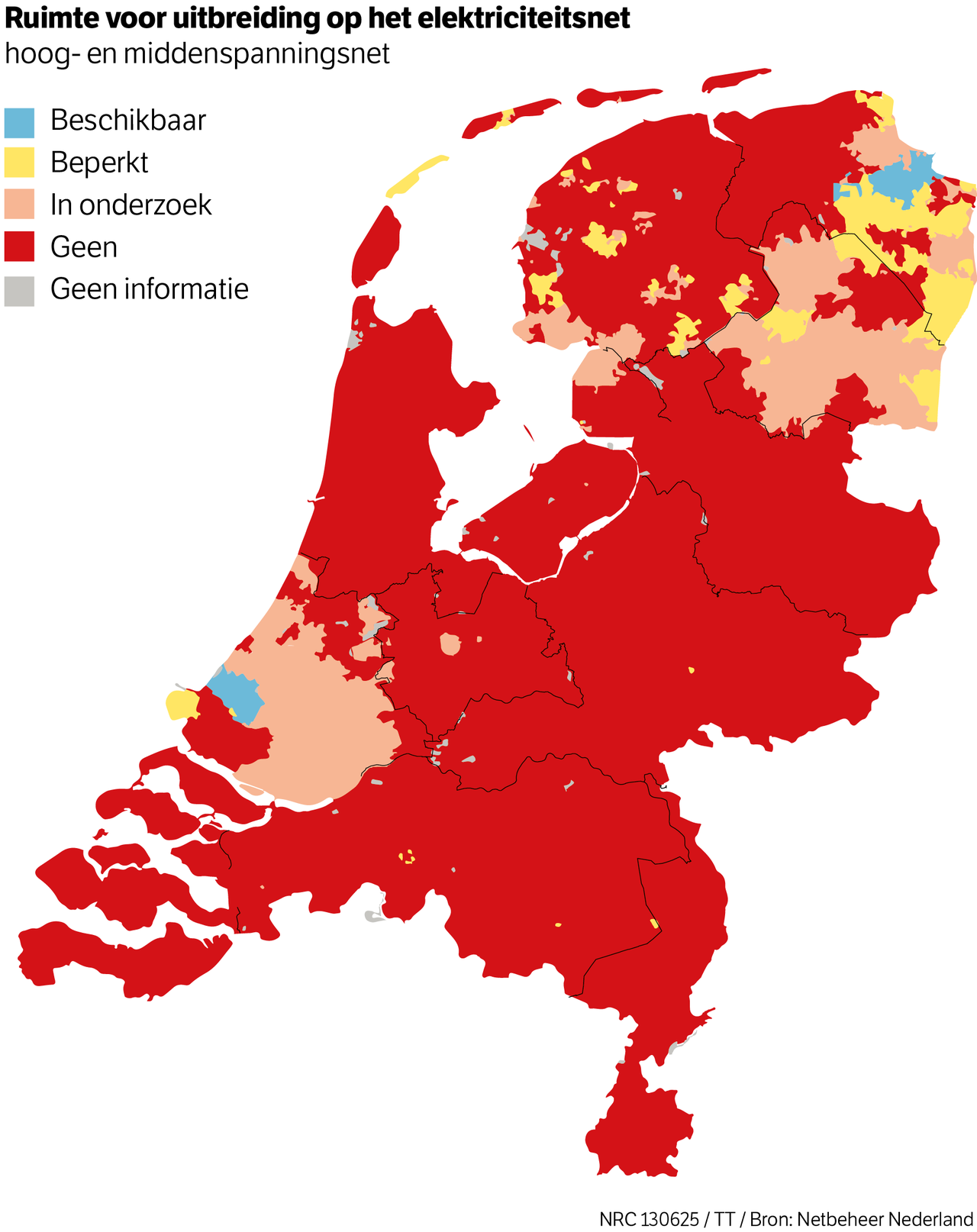Expansion of the power grid is again delayed. Will that still be fine?

How long will it take before the crisis on the power grid is finally sworn? On Thursday, National network operator Tennet reported again A hefty disappointment When combating the increasing ‘traffic jam formation’ on the power grid. Again there appears to be a great delay in the expansion of an important part of the high -voltage network – in this case in Flevoland, Gelderland and Utrecht. And again there are no guarantees that it will be fine afterwards.
At the earliest, the increase in the main network in these provinces is now only completed in 2033, according to Tennet, instead of in 2029 as previously said. And if things go wrong, it will be a little later: 2035. By that time, however, the net will probably also be more heavily burdened again, because companies and households will consume more and more power (and supply). And then Tennet may still be running after the facts.
Earlier there were also delays in the expansion of the power network in Limburg and in Noord-Brabant. You can assume that it will not be with the three new provinces that are now recovering. Because the problems that the network operator encounters are the same everywhere.
Great flight
Robert Kuik, director of networking at TenneT, speaks in a statement of an « extremely disappointing message. » The blockage of the power grid (Netcongestie) is already one of the main causes of the faltering energy transition. Throughout the Netherlands, twenty thousand companies are on the waiting list that would like to make it more sustainable, for example by using (more) electricity instead of fossil fuels, but for those who are not a place on the power grid. They sometimes have to wait up to ten years before they get a new or heavier connection.
Network operators have waited too long with the expansion of the power grid
There are no waiting lists for private individuals. But they could just come in the short term, TenneT warn and the regional network operators. Possibly already next year. Then you have to think of waiting lists for a charging station or an extra power connection for an induction tower. Many operators of wind and solar parks are also in the queue, but those for parties who want to deliver electricity to the net.
That things go so wrong does not have to surprise. With the expansion of the power grid, too long was waited by the network operators in the past. Sometimes because of negligence: the urgency of the problem was not properly estimated. But also because of hesitations to make large investments with public money (all network operators are in the hands of the government, provinces and municipalities). At the same time, the ‘electrification’ of the Netherlands took off a great flight in recent years, as a result of climate policy and then the gas crisis of 2022. When the first signs became visible that the power grid became overloaded, there was already a huge backlog.
Farmer
The complexity of the catching up is huge on top. The construction of new high -voltage pylons and associated stations is already difficult enough in times of scarcity – to begin with, find enough technicians who can build this type of infrastructure.
But the process until construction is even more complicated. In the crowded Netherlands there is a fight everywhere, it takes a long time to get a permit, there is a ‘nitrogen lock’ on construction projects, you sometimes find protected animal species and citizens and other stakeholders threaten with one objection and appeal procedure after another, because they do not want high-voltage masts in the back garden, the network managers complain.
In Utrecht, Tennet first had a location in mind for a large transformer station near the Hollandse Waterlinie. But that is World Heritage and Building now appears to be too complicated because there are all kinds of extra requirements attached to the protection of the heritage.
Read also
Also read: ‘Whether I wanted to sign for the construction of a new power cable under our field’
Tennet got it in another place on the stick With a farmer who did not want to sell his land (needed for the stream masts). And in another place, in Bunschoten, TenneT recently chased municipal councilors in the curtains because they prefer that new industry and activity will be at that location.
Parallel
Finally, Tennet itself can also be blamed for something. For example, issuing over too optimistic estimates. Tennet now says that all the hassle in Utrecht « lost for a year and a half« Went. But that does not count on the four to seven years of delay that are called.
The fact that in its entirety is also an exceptionally large infrastructure project, does not help either. According to the Ministry of Climate and Green Growth, there must be until 2040 more than 100,000 kilometers To power cables are added, more than 50,000 transformer houses built and hundreds of high -voltage stations. One in three streets in the Netherlands must be broken open in the coming years. In total, according to the latest estimates – the operation will Almost 200 billion euros will cost.
According to the network operators, another, perhaps even more important solution is in the smarter use of the existing network. The power grid is now not always overloaded, but ‘only’ at certain times of the day. Especially in the morning, when everyone wakes up and goes to work, and in the evening, when many people come home and go to cook. There is still plenty of room outside. When it comes to power supply, there is a lot of overload when the sun is shining and the wind blows.
That spread better use, for example through discount A lot would also help during off -peak hours, and consumption during peak hours. Often a parallel is drawn here with the traffic jams on the highways. Those traffic jams are not there either, but only during the morning and evening. You can reduce this traffic jam by avoiding the striker.
However, that is not yet a success story on the highways. The first traffic jam was already there in 1955and despite all the extra asphalt, this problem seems to have only become worse seventy years later. The question is whether it will go better on the power grid.

:format(webp)/s3/static.nrc.nl/wp-content/uploads/2025/05/17134116/data132277154-541362.jpg)
:format(jpeg):fill(f8f8f8,true)/s3/static.nrc.nl/taxonomy/061fd2f-Rusman%252C%2520Floor%25202023%2520%255BDoomernik%25202320%255D%25201280%2520WEB.png)
/s3/static.nrc.nl/images/gn4/data133640382-b27d9d.jpg)
:format(webp)/s3/static.nrc.nl/bvhw/files/2025/06/data133492064-352652.jpg)



